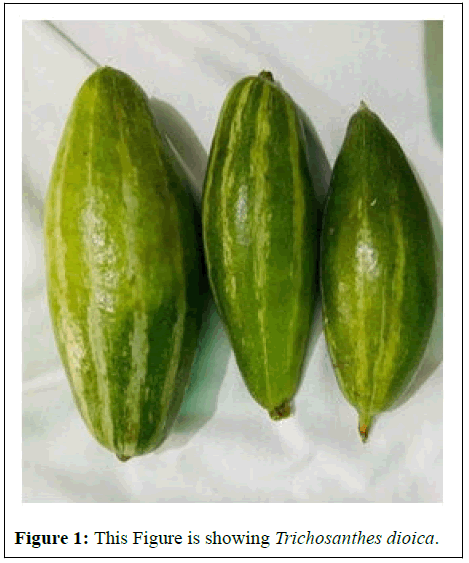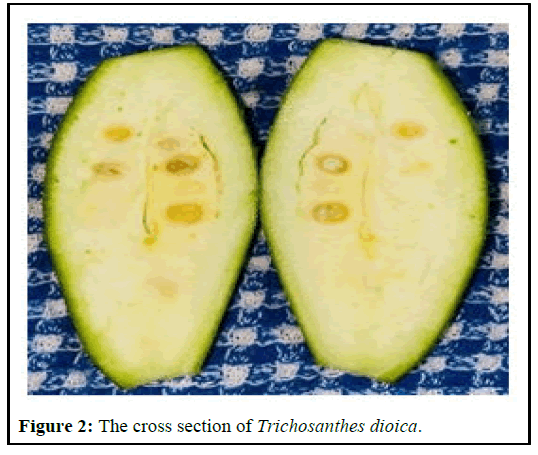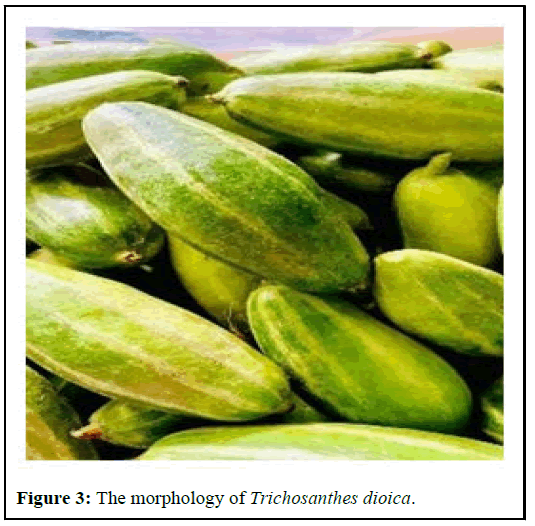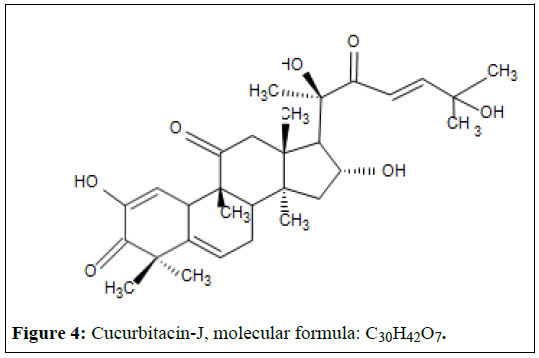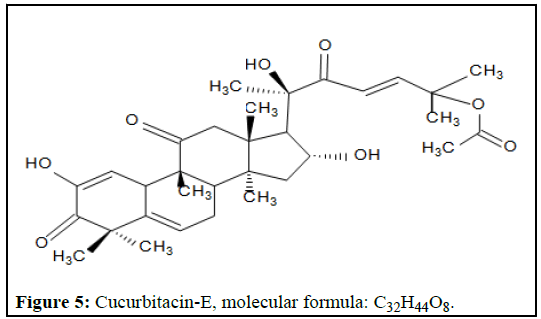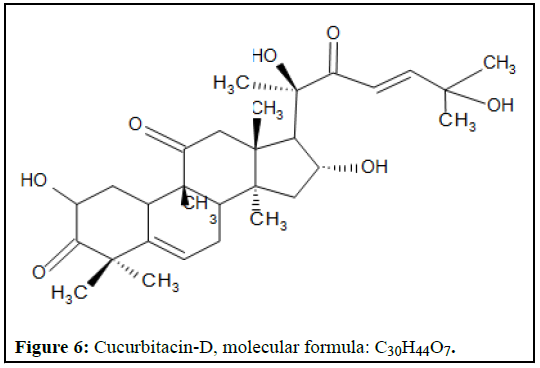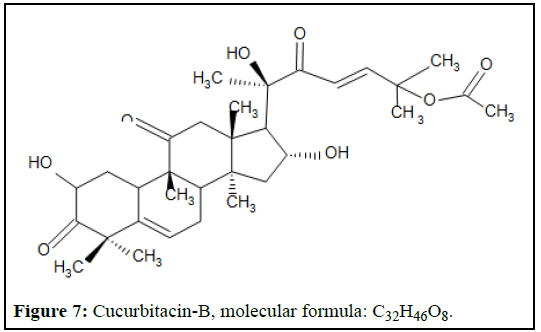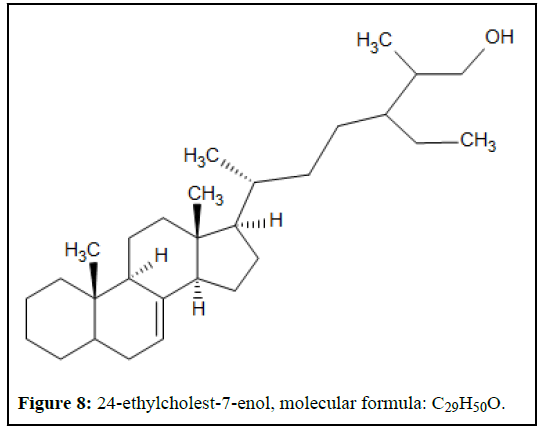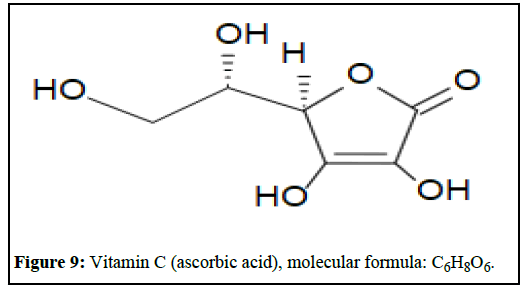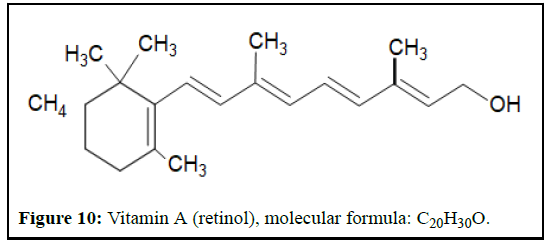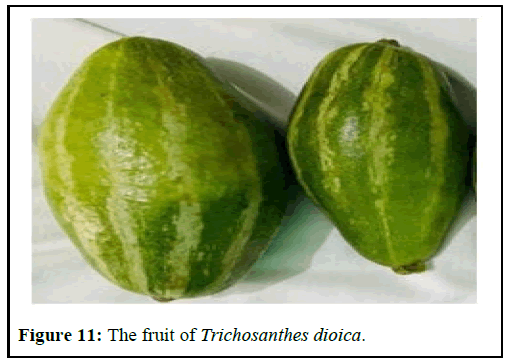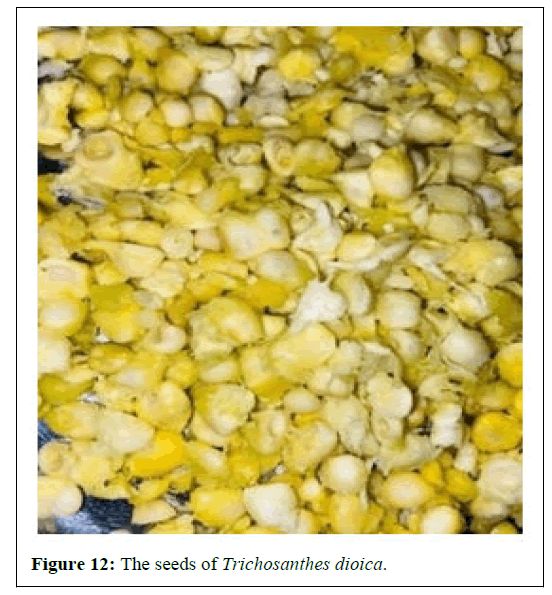Therapeutic Potential ofTrichosanthes dioica Plant (Pointed Gourd)-A Review
Received: 31-Jan-2023 / Manuscript No. JGDS-23-88377 / Editor assigned: 02-Feb-2023 / PreQC No. JGDS-23-88377 (PQ); / Reviewed: 16-Feb-2023 / QC No. JGDS-23-88377 / Revised: 01-May-2023 / Manuscript No. JGDS-23-88377 (R) / Published Date: 08-May-2023
Abstract
Trichosanthes dioica, also referred as "Sespadula" in English and "Parwal" in Hindi, is found abundantly throughout India. T. dioica leaf juice is used as a febrifuge, tonic in alopecia and in subacute liver enlargement instances. Leaf and fruit remedies for drunkenness and jaundice are mentioned in the Charaka Samhita. The immature fruits are eaten fried and as dorma with roe stuffing, as well as used as a vegetable in soup, stew, curry and sweet dishes. Apart from the fruits, other parts of the plant, such as the leaves and tender shoots, have been used in traditional medicine since ancient times. When shade dried fruits were mixed in the food of non-diabetic animals, specific medicinal properties such as hypocholesterolemic, hypoglyceridimic were discovered. Its seeds and leaves have recently been discovered to be anti-diabetic agents. Numerous pharmaceutical studies have scientific research on several T. dioica components, but some other historically significant therapeutic uses are also up till now scientifically unproven. The plant can be used as an anti-inflammatory, anti-cancer, hypolipidemic, cardiotonic, diuretic, ulcer-preventive, antidiabetic etc. The plant shows good antioxidant activity. The different chemical components that are present in the plant are vitamin A, vitamin C, tannins, saponins, alkaloids, peptides, tetra and pentacyclic triterpenes, etc. The present review describes about the various parts of plant which can be used for the research, different phytochemicals present in the plant and pharmacological activity of the plant.
Keywords
Trichosanthes dioica; Cucurbitaceae; Hepatoprotective; Anticancer; Antidiabetic; Antioxidant
Introduction
A perennial herb found in tropical Asia, Trichosanthes is a member of the Cucurbitaceae family and is a common vegetable. Its kingdom is plantae, the class is Magnoliopsida, the order is cucurbitales, the genus is Trichosanthes and the species is T. dioica. Various names for the pointed gourd (Trichosanthes dioica) include parwal, palwal, parmal, patol. The plant’s edible portions are the fruits and leaves, which are prepared in a variety of ways either by themselves or with other vegetables [1]. The herb is widely cultivated, especially in Australia, Bangladesh, India and Nepal as well as other tropical Asian regions. The herb T. dioica contains the following phytochemicals: The herb includes tetra and pentacyclic triterpenes, tannins, saponins, vitamin A, vitamin C and tannins [2]. Cucurbitacins (toxic bitter principles), lectin, polysaccharides, phenols and sterols (such as 24α ethylcholest-7-enol and 24β ethylcholest-7-enol), fats and synthetic oils, as well as proteins and amino acids [3,4].
Minerals like Na (0.26 mg/kg), Mg (0.9 mg/kg), K (0.83), Cu (0.11) and S (0.17 mg/kg) and Cl [5,6]. The juice or decoction of Trichosanthes dioica leaves is used as a tonic, diuretic, cardiotonic, anthelmintic, aphrodisiac, febrifuge, laxative, used in edema, alopecia, dysentery, diarrhea, bronchitis and used to stop bleeding from bruises, restore hair. Additionally, it has parasiticidal, insecticidal and antiseptic effects. Alcoholism and jaundice are both treated with fruits and leaves. Fruits improve appetite and digestion and are stomachic and cardiotonic. Ripe fruit is also tonic, aphrodisiac and expectorant. It has cathartic properties [7-9]. Peptides are abundant in the seeds of T. dioica. The distinctive quality of the seed peptides is their resistance to the action of silver nitrate, a sensitive dye frequently employed to stain proteins. The plant’s seeds were also shown to have antifungal and antibacterial properties and they are frequently used to treat acid dyspeptic diseases [10]. Traditional Indian medicine utilizes the root of T. dioica as a febrifuge, purgative, tonic and treatment for ascites, anasarca and jaundice. Reports on exploratory pharmacological research on its origin, however, are very rare. T. dioica's leaf and root have been shown to have anthelmintic, antimicrobial, antimitotic and anticancer properties in previous investigations [11]. The unripe fruit is prepared either by itself or in a dish with other meat or vegetables. It is a very healthy vegetable with the potential to be used industrially to create many kinds of jam, jelly and pickles. This vegetable is becoming more and more popular in ethnic grocery stores around the world. Numerous ayurvedic medicines and folk practitioners both use various components of this species. Many investigations have been conducted to determine whether the traditional applications are valid (Figure 1) [12].
Literature Review
Cultivation
Typically, root suckers and vine cuttings are used to propagate T. dioica. Due to their low germination and incapacity to grow, seeds are not used in planting [13]. As a result, a crop grown from seed may contain up to 50% non-fruiting male plants. For propagation, both prerooted and fresh vine cuttings are used. Vine cuttings are taken in the fall of the previous year and rooted over the winter. Fresh vines should have 8-10 nodes per cutting when used for field planting. The distance between plants is kept between 1.5 meters and 2.0 meters. A female: Male ratio of 9:1 is ideal for the maximum fruit set (Figure 2).
Morphology
Perennial, dioecious and growing like a vine, the plant. The vines are oblong, not lobed and have dark green cordate, ovate and leaf like leaves. Tuberous roots with a long taproot structure [14]. Flowers are tubular white with initiation to anthesis times of 16 days-19 days for pistillate flowers and 10 days-14 days for staminate flowers. Stigma survives for about 14 hours and 40%-70% of flowers bear fruit. Fruits are classified into four types based on their shape, size and striation: Long, dark green with white stripes, 10 cm-13 cm long, thick, dark green with very pale green stripes, 10 cm-16 cm long, roundish, dark green with white stripes, 5 cm-8 cm long (Figure 3).
Chemical constituents
An earlier chemical study reveals that the toxic bitter principles known as cucurbitacins, a group of frequently highly oxygenated tetracyclic compounds with a distinctive carbon skeleton and nearly a carbonyl group in ring C, may be considered a taxonomic characteristic of the Cucurbitaceae in addition to a number of tetra and pentacyclic triterpenes [15]. Vitamin rich T. dioica has a 100 gm edible component content of 9.0 mg Mg, 2.6 mg Na, 83.0 mg K, 1.1 mg Cu and 17.0 mg S. Vitamins A, C, tannins and saponins are among the chemical components found in T. dioica. T. dioica contains 24α ethylcholest-7-enol and 24β ethylcholest-7-enol as its two primary phytosterols. Additionally, T. dioica seeds contain lectin, a protein that binds carbohydrates (particularly galactose) and is similar to type-II ribosome inhibitory proteins (Figures 4-10).
Parts of plant
Leaves: The plant’s leaves are thought to be a plentiful source of bioactive substances with a variety of therapeutic benefits, including the ability to reduce blood sugar levels in experimental rats, a person with moderate diabetes, antifungal and antimicrobial activity [16-18]. Alkaloids, glycosides, flavonoids, steroids, saponins, tannins, triterpenoids, fibre (4.2%), minerals (0.531 mg/kg), calcium (0.531 mg/kg), phosphorous (0.73 mg/kg), lipids (1.1%), carbohydrates (5.8%) and proteins (5.4%) all are present in the leaves [19,20].
Microscopy of leaves
Qualitative microscopy: The following characteristics can be seen on a leaf’s Transverse Section (TS) through the midrib:
• Upper and lower epidermis are present: Polygonal epidermal cellular cuticles.
• Bicollateral vascular bundle (phloem coated xylem cells by both sides of the cells).
• The pericycle's presence at the phloem’s outside.
• The presence of collenchyma and parenchyma.
Quantitative microscopy: Leaf constants like stomatal number, stomatal index, vein islets number and palisade ratio were discovered with the help of camera lucida. Both of the leaf's surfaces have stomata.
Stomatal density was observed to be higher on the lower surface of leaves than the upper surface. Palisade cells were discovered on the leaf's upper surface.
• Upper surface stomata contain between 261-343 and 400-441 stomata per millimeter (lower surface).
• Upper surface stomatal index is 19 and 30 of the lower surface. Vein islets per mm: 60-65 and palisade ratio: 5-7.
Macroscopy of leaves: Leaves of T. dioica are green in color, odorless, characteristic flavor, 7 cm-12 cm in length, 4 cm-6 cm in width, rigid texture, rough surface, recurved and blunt apex, symmetrical base, cordate venation, unlobed and heart shaped lamina, whole margin.
Fruit
The fruit is thought to have anthelmintic properties. The fruit is a highly potent purgative and an effective emetic and the dried capsules are used in an infusion or decoction with sugar to aid in digestion. Ascorbic acid, nicotinic acid, riboflavin, thiamine, 5- hydroxytryptamine, cucurbitacin B, cucurbitane glycosides (e.g., khekadaengosides A-J, M-N, cucurbitacin J 2-O-bglucopyranoside, cucurbitacin K 2-O-bglucopyranoside, cucurbitacin 2-0-bglucopyranoside), hexanorcucurbitane glucoside). T. dioica's fruit (pepo) is globose, oblong and smooth; the edible part is mostly the pericarp and a small amount of the mesocarp. Fruit shapes can vary significantly. Fruits can be primarily categorized based on their size and striation patterns (Figure 11).
There are four groups:
• Dark green, 10 cm-13 cm long with 10 cm-16 cm long.
• Thick, dark green stripes very faint green stripes.
• Tiny, roundish, 5 cm-8 cm long, dark green with white stripes.
• Little (5 cm-8 cm long), green and striped, tapering at the ends.
Seeds
They are used for cooling. Dried seeds are used for their anthelmintic and antidiarrheal properties. The seeds have antibacterial, antispasmodic, antiperiodic and insecticidal properties. It is used as an abortifacient, stimulant, aphrodisiac, astringent, bitter, antipyretic, laxative, toxic and hair growth agent. Peptides (abundant), 7- oxydihydrocarnidol-3-benzoic acid, cucurbita-5, 24-dienol (also in mature plants), linoleic acid, oleic acid and oleo stearic acid (trichosanic acid) are present in the seeds. Poor germination and late sexual progeny blossoming make seed propagation undesirable. More than 50% of non-fruiting staminate plants are produced by seed based populations, whereas only 10% of staminate plants are necessary for effective pollination and fruit set (Figure 12).
Roots
Juice from two ounces of roots has a strong purgative effect. Roots are used in China to treat diabetes and skin swelling like boils and furuncles. There is anticonvulsant action in fresh root. The root's bulbous portion is utilized as a hydragogue and a cathartic. Root is emetic, alexiteric, anthelmintic, antiseptic, astringent and has abortifacient properties. Trichosanthin, hentriacontane, colocynthin, terpenes, fixed oil, starch, tannins (trace amounts), flavonoids, alkaloids, reducing sugars, saponins, steroids, hentriacontane and sterols (e.g. 24-methylcholesterol, 24- methylenecholesterol, 24-methylcholesta-7,22-dienol, 24-ethylcholesta, 22-dienol, 24-ethylcholesta-5,22,25-trienol, 24-ethylcholesta-8,22-dienol, 24-methylenecholest-7-enol, 24-ethylcholesterol, 24-ethylcholesta-8,22,25 trienol), triterpenols e.g. euphol, tirucallol, cycloartanol, taraxerol, -amyrin, butyrospermol, isomultiforenol, 24-methylene-24-dihydrolanosterol, - amyrin, cycloartenol, lupeol, 24-methylenecycloartanol, multiforenol.
Results and Discussion
Pharmacological activity
Antioxidant activity: In vitro: Fruit extract in aqueous form (5 g/ mL-120 g/mL) demonstrated significant DPPH, NO and Hydroxyl (OH) radical scavenging as well as Ferric (Fe3+) reducing capacity in a concentration dependent manner. It was discovered that the DPPH, NO and OH were scavenged by the petroleum ether fruit extract of T. dioica in a concentration dependent manner. Additionally, it had a significant ferric reduction capability, indicating this herb may have antioxidant properties. Methanol leaf extract showed a concentration dependent potential DPPH scavenging and Fe3+ lowering capability at 22.08 g/mL-2000 g/mL.
In vivo: It has been demonstrated that the hydroalcoholic root extract and the herb’s aqueous extract increase reduced Glutathione (GSH), Glutathione-S-Transferase (GST), Glutathione Peroxidase (GPx), Glutathione Reductase (GR), Superoxide Dismutase (SOD) and Catalase (CAT), while decreasing oxidized glutathione and lipid peroxidation in rats. In mice, it was discovered that the hydroalcoholic extract of T. dioica root and the triterpenoid fraction of the root reduced oxidative stress by enhancing GSH, GST, SOD and CAT, while lowering lipid peroxidation.
Anti-inflammatory activity
In formalin induced acute inflammatory wistar albino rats, ascitic fluid production was significantly reduced by the triterpenoid enriched fraction from T. dioica root (25 mg/kg, 50 mg/kg and 100 mg/kg, p.o.). In a carrageenan induced edema model in mice, the T. dioica ethanolic aerial parts extract and its ethyl acetate fraction at 150 mg/kg and 300 mg/kg (p.o.) demonstrated significant anti-inflammatory activity, possibly by lowering tumor necrosis factor levels and decreasing the expression of cyclooxygenase-2 and nuclear transcription factor-kB. Additionally, the antioxidant enzymes superoxide dismutase, catalase and glutathione activity were all upregulated. Additionally, carrageenan induced inflammation in rats (n=5) revealed a moderate anti-inflammatory effect for the ethanol and aqueous leaf extracts at 200 mg/kg (p.o.).
Antimicrobial activity
Antibacterial effect: It is evident that the herb’s aqueous leaf, fruit and seed extracts (25 mg/mL, 50 mg/mL and 75 mg/mL) have antibacterial effects against Staphylococcus aureus, Klebsiella pneumonia, Escherichia coli, Pseudomonas aeruginosa, and Mycobacterium smegmatis. On the other hand, the aqueous root extracts at 10 g/mL exhibited antibacterial activity against Proteus mirabilis and Bacillus subtilis.
Antifungal effect: A novel chitinase enzyme that was recently isolated from the seeds of T. dioica reportedly exhibits antifungal activity against Aspergillus niger and Trichoderma sp. and has a molecular weight of 39 1 kDa in the presence and absence of mercaptoethanol.
Anthelmintic activity
Pheretima posthuma and Ascaridia galli were observed to be inhibited by the methanol leaf extract of T. dioica and its ethyl acetate and butanol fractions (3.125 mg/mL-50 mg/mL). Furthermore, the methanol, dichloromethane and the herb’s aqueous root extracts likewise had a concentration dependent cytotoxic effect on P. posthuma and A. galli asserting that T. dioica has anthelmintic properties.
Wound healing activity
In comparison to the control groups, the plant’s methanol extract significantly improved the ability of burn injured rats to heal by altering all of the parameters measured, including wound contraction, epithelialization time and hydroxyproline content.
When compared to the control group, the methanolic fruit extract of T. dioica significantly (p<0.01) accelerated the healing of both excision and incision wounds in rodents (n=6). Significant changes were seen in all measures, including wound contraction, epithelialization period, hydroxyproline content, tensile strength and histopathology.
Anti-cancer activity
Ehrlich Ascites Carcinoma (EAC) in Swiss albino mice showed a dose dependent and significant decrease in tumour weight, tumor volume, packed cell volume and viable cell count as well as an extension of the survival time when T. dioica root hydroalcoholic extract was administered (5 mg/kg and 10 mg/kg/day, p.o. for 9 consecutive days) EAC bearing animal’s average lifespan. The liver antioxidant parameters (such lipid peroxidation) and haematological profiles (like haemoglobin). In comparison to the control group (peroxidation, GSH, GST, SOD and CAT) were also significantly altered.
In Swiss albino mice, the triterpenoid fraction of T. dioica root 2 mg/kg and 4 mg/kg (i.p.) body weight daily for 9 days had an antiproliferative effect on Ehrlich ascites cancer. According to the authors, the extract affected hepatic and haematological antioxidative indices (such as lipid peroxidation, GSH, GST, SOD and CAT) in a dose dependent manner. Additionally, compared to the control group, the mean survival time and life expectancy increased, whereas tumor growth, weight, volume, packed cell volume, viable and non-viable tumor cell counts decreased.
Anti-hypertensive activity
T. dioica aqueous, ethanol, petroleum ether and chloroform fruit extracts significantly reduced blood pressure in dexamethasone induced hypertensive Wistar albino rats after 5 days of oral treatment.
Anti-diabetic activity
In Streptozotocin (STZ) induced sub and mild diabetic rats, the aqueous leaf extract of T. dioica (250 mg/kg, 500 mg/kg and 750 mg/kg, p.o.) was observed to lower the blood glucose level (fasting and tolerance test) in comparison to the control group. While increasing Total Protein (TPR) and body weight in STZ induced hyperglycemic rodents, the aqueous fruit extract of the herb at 1000 mg/kg (p.o.) significantly decreased fasting blood glucose, postprandial glucose, Aspartate amino Transferase (AST), Alkaline amino Transferase (ALT), Alkaline Phosphatase (ALP), urine sugar, urine protein and creatinine levels, while enhancing Total Protein (TPR), body weight in STZ induced hyperglycemic rodent. In STZ induced diabetic rats (n=6), the aqueous seed extract at doses of 500 mg/kg 750 mg/kg, 1000 mg/kg and 1250 mg/kg (p.o.) decreased blood glucose levels in a dose dependent man. Additionally, it was discovered that the herb’s aqueous leaf extract decreased blood glucose levels in the same test system at doses of 250 mg/kg, 500 mg/kg and 750 mg/kg (p.o.).
When compared to the control group, the aqueous leaf extract of T. dioica (800 mg/kg and 1600 mg/kg, p.o.) significantly lowered blood glucose levels in normoglycemic and STZ induced hyperglycemic rats. However, in STZ induced diabetic rats (n=6), the aqueous fruit extract (500 mg/kg, 750 mg/kg, 1000 mg/kg and 1250 mg/kg, p.o.) reduced blood glucose levels in a dose dependent manner. In diabetic rats, the same herb’s extract (1000 mg/kg, p.o., for 28 days) was discovered to suppress the gene expression of the tissue specific cytochrome P450.
In normal, mild and severe diabetic rats, the aqueous fruit extract of T. dioica was reported to have a significant anti-diabetic effect by regulating changed biochemical parameters, including blood glucose level (fasting and tolerance), notably with the 1000 mg/kg dose (p.o. for 4 weeks). Additionally, the extract increased the levels of High Density Lipoprotein (HDL), total protein, haemoglobin and body weight in the test animals while decreasing their levels of Total Cholesterol (TOC) and Triglycerides (TGs). In alloxan induced diabetic rats (n=6), the same extract at 300 mg/kg (p.o.) likewise reduced blood glucose and raised serum insulin levels. However, in STZ induced diabetic rats (n=6), ethanol leaf extract (200 mg/kg and 400 mg/kg, p.o. for 28 days) significantly decreased blood glucose and the activities of glucose-6-phosphatase and fructose-1,6- bisphosphatase while increasing the activities of glucokinase, pyruvate kinase and glucose-6-phosphate dehydrogenase.
Additionally, the same test method revealed that ethanol leaf and fruit extracts at 200 mg/kg and 400 mg/kg for 28 days (p.o.) increased body weight and HDL levels while lowering blood glucose, TOC, triglycerides, Low Density Lipoprotein (LDL), Very Low Density Lipoprotein (VLDL) and phospholipids. In a recent study, it was discovered that the herb’s aqueous leaf extract (250 mg/kg and 500 mg/kg, p.o.) improved the anti-hyperglycemic effects of metformin in STZ induced diabetic rats (n=6).
Hypolipidemic activity
In normal and STZ induced diabetic rats, the aqueous fruit extract at 50 mL/kg (p.o., for 15 days) reduced cholesterol and body weight in the rats. It is also obvious that the herb’s aqueous fruit extract reduces the HDL, TPR, haemoglobin and body weight of the experimental animals increased whereas the TOC and TGs decreased. The ethanol leaf and fruit extracts were discovered to raise HDL levels and body weight. Rats showed a reduction in TOC, TGs, LDL, VLDL and phospholipids.
Neurological activity
The methanol root extract (75 mg/kg and 150 mg/kg, p.o.) showed good anti-nociceptive and decreased locomotor effects in acetic acid induced writhing and tail flick technique in mice (n=8). The antinociceptive and anti-inflammatory effects of the triterpenoid enriched extract of T. dioica root (50 mg/kg and 100 mg/kg, p.o.) in Swiss albino mice are apparent in a dose dependent manner. On the other hand, a dose dependent anti-nociceptive action was seen in rodents when the herb’s hydroalcoholic root extract was administered (100 mg/kg and 200 mg/kg, p.o.). Additionally, it was demonstrated that the herb’s methanolic aerial parts extract (200 mg/kg and 400 mg/kg, p.o.) had a dose dependently significant analgesic effect in acetic acid induced writhing and tail immersion procedures in mice (n=5).
Gastroprotective and antiulcer activity
In both castor oil induced diarrheal and loperamide induced constipated Swiss albino mice, the aqueous extract of T. dioica root (100 mg/kg and 200 mg/kg, p.o.) significantly and dose dependently boosted all the excretory bowel activities and gastrointestinal transit. The herb’s triterpenoid enriched root extract has a gastro protective effect on albino mice.
In aspirin plus pylorus ligation and ethanol/HCl induced ulcer in Wistar rats (n=6), the aqueous leaf extract (250 mg/kg and 500 mg/kg, p.o.) significantly decreased the ulcer index, volume of gastric juice, free total acidities and pepsin activity while increasing the pH of gastric acid. However, in pylorus ligation, ethanol and indomethacin induced ulcerative rats (n=6), the herb’s methanol leaf extract at 100 mg/kg and 200 mg/kg (p.o.) is clear to demonstrate substantial antiulcer activity.
Hepatoprotective activity
Hepatoprotective activity of T. dioica (whole plant) aqueous and ethanolic extracts in ferrous sulfate induced liver injury. T. dioica ethanolic and aqueous extracts (100 mg/kg, 200 mg/kg and 400 mg/kg) and silymarin (100 mg/kg) were given orally for 10 days. Aspartate Aminotransferase (AST), Alanine Aminotransferase (ALT) and Alkaline Phosphotase (ALP) levels were significantly reduced in the groups treated with 400 mg/kg aqueous and ethanolic extracts. Histopathological studies revealed that pretreatment with T. dioica extracts provided profound histopathological protection to liver cells. As a result, it is possible to conclude that T. dioica Roxb has significant hepatoprotective activity.
Nephroprotective activity
Methanol fruit extract (100 mg/kg, 200 mg/kg and 400 mg/kg, p.o. for ten consecutive days) decreased glomerular congestion, per tubular and blood vessel congestion, epithelial desquamation, an accumulation of inflammatory cells and necrosis of the kidney cells; it also normalised plasma and urine creatinine, blood urea, and blood urea nitrogen levels and improved renal tubular necrosis in rats (n=6) with gentamicin induced. In gentamicin induced nephrotoxicated rats (n=5), the same extract at 200 mg/kg and 400 mg/kg (p.o.) was also observed to reduce blood urea, creatinine, and uric acid while restoring antioxidant enzymes.
Cardioprotective activity
In arsenic induced cardiotoxic wistar albino rats, the hydroalcoholic root extract of T. dioica (5 mg/kg and 10 mg/kg p.o. for 20 days) was observed to decrease lipid peroxidation, oxidised glutathione and DNA fragmentation, while boosting GSH, GST, GPx, glutathione reductase, SOD and CAT. Additionally, the extract dramatically changed the experimental animals altered body weight, heart weight, haematological profile and serum biochemical levels, suggesting a protective mechanism against arsenic induced cardiac oxidative stress. For a 20 days treatment period, similar behaviour was also seen with its aqueous fruit extract at 50 mg/kg and 100 mg/kg (p.o.).
Immunomodulatory effect
In normal and Sodium Carboxymethyl Cellulose (NaCMC) induced rats (n=5), aqueous extract (100 mg/kg and 200 mg/kg/day, p.o. for 45 days) was observed to boost antibody production along with RBC, WBC and haemoglobin levels without changing biochemical markers. Additionally, the herb clearly exhibits hemagglutinating action.
Hair growth facilitatory effect
In comparison to the control group, the ethanol and aqueous leaf extracts of T. dioica significantly increased the number and length of hairs in wistar albino rats. The results showed a significant hair growth promoting activity of the herb when compared to the group that received the usual medication minoxidil.
Conclusion
Trichosanthes dioica is a well-known and widely available plant that is used in Indian medicine. T. dioica fruits are also grown in India, Japan, Sri Lanka, China and Thailand. Fruits are consumed as vegetables because they are an important part of the average Indian diet. As a result, it is not incorrect to state that much work remains to be done on this vital plant. Aside from that, ancient traditional literature such as the Charaka Samhita mentioned Trichosanthes dioica's protective role on vital body organs such as the liver and spleen, many of which are now scientifically proven. Trichosanthes dioica may play an important role in the development of geriatric care formulations because it contains almost all of the properties of pharmaceutical care designed for the elderly, such as antioxidant, antidiabetic, cholesterol lowering, and hepatoprotective properties, among others. Numerous studies on the herb indicate that T. dioica is a potentially useful herb with a wide range of therapeutic properties. Further research into the specific active constituents in the plant responsible for its therapeutic actions would be beneficial. Along with its diverse pharmacological actions, it is critical to investigate herbdrug and herb-herb interactions with T. dioica, as they may exist and have serious consequences.
References
- Khatua S, Pandey A, Biswas SJ (2016) Phytochemical evaluation and antimicrobial properties of Trichosanthes dioica root extract. J Pharmacogn Phytochem 5: 410-413.
- Ali N, Sultan M, Kenoth R, Swamy MJ (2004) Purification, physicochemical, characterization, saccharide specificity and chemical modification of a Gal/GalNAc specific lectin from the seeds of Trichosanthes dioica. Arch Biochem Biophys 432: 212-221.
[Crossref] [Google Scholar] [PubMed]
- Kumar N, Singh S, Gupta MR (2012) Trichosanthes dioica Roxb: An overview. Pharmacogn Rev 6: 61-67.
[Crossref] [Google Scholar] [PubMed]
- Shah BN, Seth AK (2010) Pharmacological potential of Trichosanthes dioica-an edible plant. Hygeia J Drugs Med 2: 1-7.
- Mandal SC, Maiti PP, Das AK, Mandal V, Panda S (2014) Pharmacological potentialities of Trichosanthes dioica Roxb. (Cucurbitaceae): An overview. Int J Pharmacogn 1: 422-428.
- Deka S, Sharma KR, Lahkar M (2015) Phytochemical and in vitro antioxidant activity of methanolic leaves extract of Trichosanthes dioica Roxb. Pharm Innov 4: 59-61.
- Khandaker M, Akter S, Imam ZM (2018) Trichosanthes dioica Roxb: A vegetable with diverse pharmacological properties. Food Sci Hum Wellness 7: 34-48.
- Sharma G, Pandey DN, Pant MC (1990) The biochemical valuation of feeding Trichosanthes dioica Roxb. seeds in normal and mild diabetic human subjects. In relation to lipid profile. Ind J Physiol Pharmacol 34: 140-148.
[Google Scholar] [PubMed]
- Hamdulay N, Attaurrahaman Z, Shende V, Lawar M (2012) Evaluation of gastric antiulcer activity of Trichosanthes dioica Roxb leaves. Int J Pharm Sci Res 3: 4332-4337.
- Solomon JA, Ganeshpurkar A, Shrivastava N, Bansal D, Dubey N (2014) Determination of Cucurbitacin B in Trichosanthes dioica Roxb. by HPTLC. Pharmacogn Commun 4: 8-12.
- Kabir S (2000) The novel peptide composition of the seeds of Trichosanthes dioica Roxb. Cytobios 103: 121-131.
[Google Scholar] [PubMed]
- Shivhare Y, Singh P, Patil UK (2010) Healing potential of Trichosanthes dioica Roxb. on burn wounds. Res J Pharmacol Pharmacodyn 2: 2168-2171.
- Bhattacharya S, Haldar PK (2012) Trichosanthes dioica fruit ameliorates experimentally induced arsenic toxicity in male albino rats through the alleviation of oxidative stress. Biol Trace Elem Res 148: 232-241.
[Crossref] [Google Scholar] [PubMed]
- Bhattacharya S, Haldar PK (2012) Ameliorative effect Trichosanthes dioica root against experimentally induced arsenic toxicity in male albino rats. Environ Toxicol Pharmacol 33: 394-402
[Crossref] [Google Scholar] [PubMed]
- Bhattacharya S, Das SK, Haldar PK (2014) Arsenic induced myocardial toxicity in rats: Alleviative effect of Trichosanthes dioica fruit. J Diet Suppl 11: 248-261.
[Crossref] [Google Scholar] [PubMed]
- Bhattacharya S, Haldar PK (2011) Trichosanthes dioica root extract induces tumor proliferation and attenuation of antioxidant system in albino mice bearing Ehrlich ascites carcinoma. Interdiscip Toxicol 4: 184-190.
[Crossref] [Google Scholar] [PubMed]
- Kharbanda C, Alam MS, Hamid H, Javed K, Bano S, et al. (2015) Ameliorative effects of Trichosanthes dioica extract in suppressing inflammatory mediators and attenuating oxidative stress. Planta Med 81: 348-356
[Crossref] [Google Scholar] [PubMed]
- Rai PK, Metha S, Gupta RK, Watal G (2010) A novel antimicrobial agents Trichosanthes dioica. Int J Pharm Bio Sci 1: 1-9.
- Kabir SR, Rahman MM, Tasnim S, Karim MR, Khatun N, et al. (2016) Purification and characterization of a novel chitinase from Trichosanthes dioica seed with antifungal activity. Int J Biol Macromol 84: 62-68.
[Crossref] [Google Scholar] [PubMed]
- Rai PK, Jaiswal D, Diwakar S, Watal G (2008) Antihyperglycemic profile of Trichosanthes dioica. Seeds in experimental models. Pharm Biol 46: 360-365.
Citation: Vyas A, Sharma B (2023) Therapeutic Potential of Trichosanthes dioica Plant (Pointed Gourd)-A Review. J Gastrointest Dig Syst 13: 736.
Copyright: © 2023 Vyas A, et al. This is an open-access article distributed under the terms of the Creative Commons Attribution License, which permits unrestricted use, distribution and reproduction in any medium, provided the original author and source are credited.
Select your language of interest to view the total content in your interested language
Share This Article
Recommended Journals
Open Access Journals
Article Usage
- Total views: 2109
- [From(publication date): 0-2023 - Oct 27, 2025]
- Breakdown by view type
- HTML page views: 1798
- PDF downloads: 311

